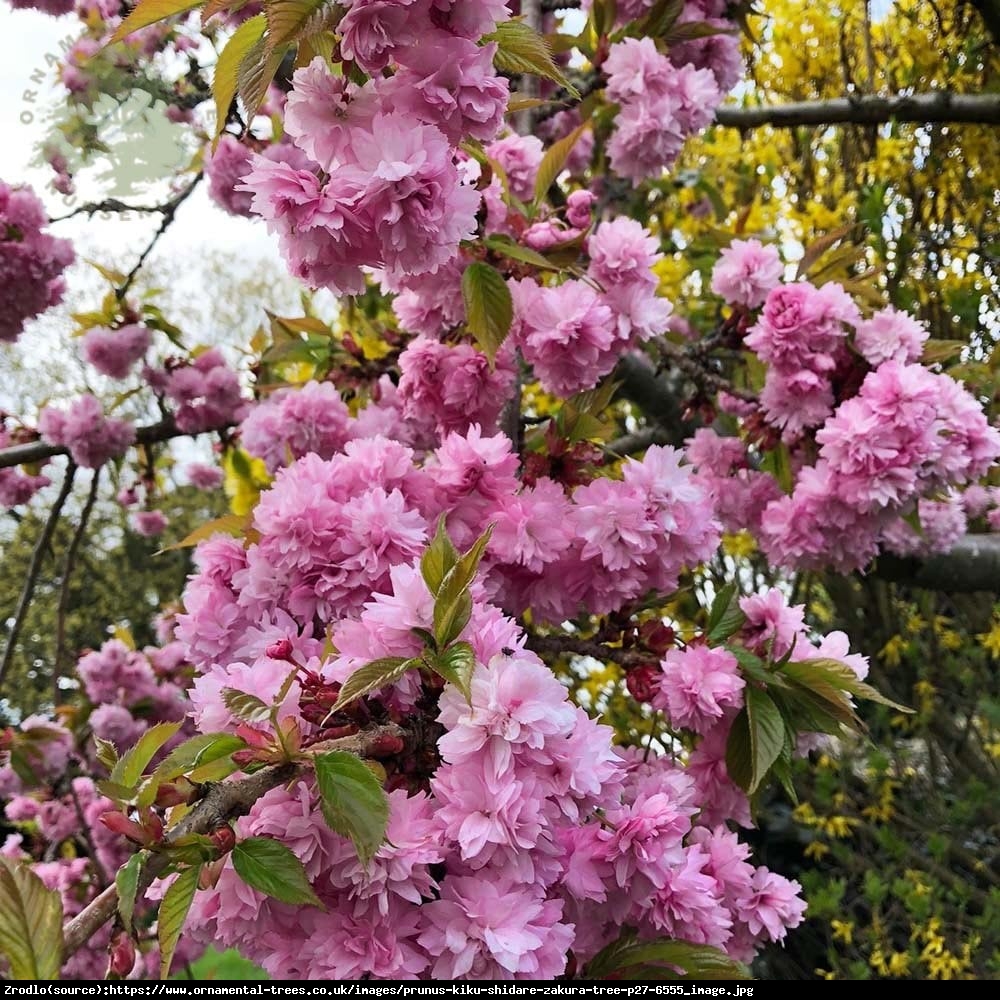
Wiśnia piłkowana kikushidarezakura Prunus serrulata kikushidarezakura
Prunus 'Kiku-Shidare-Zakura': A cherished garden favorite. This small deciduous tree features graceful arching branches covered in charming, rich pink double flowers with up to 125 elliptic petals. The lush blooms appear in clusters, creating a captivating display.
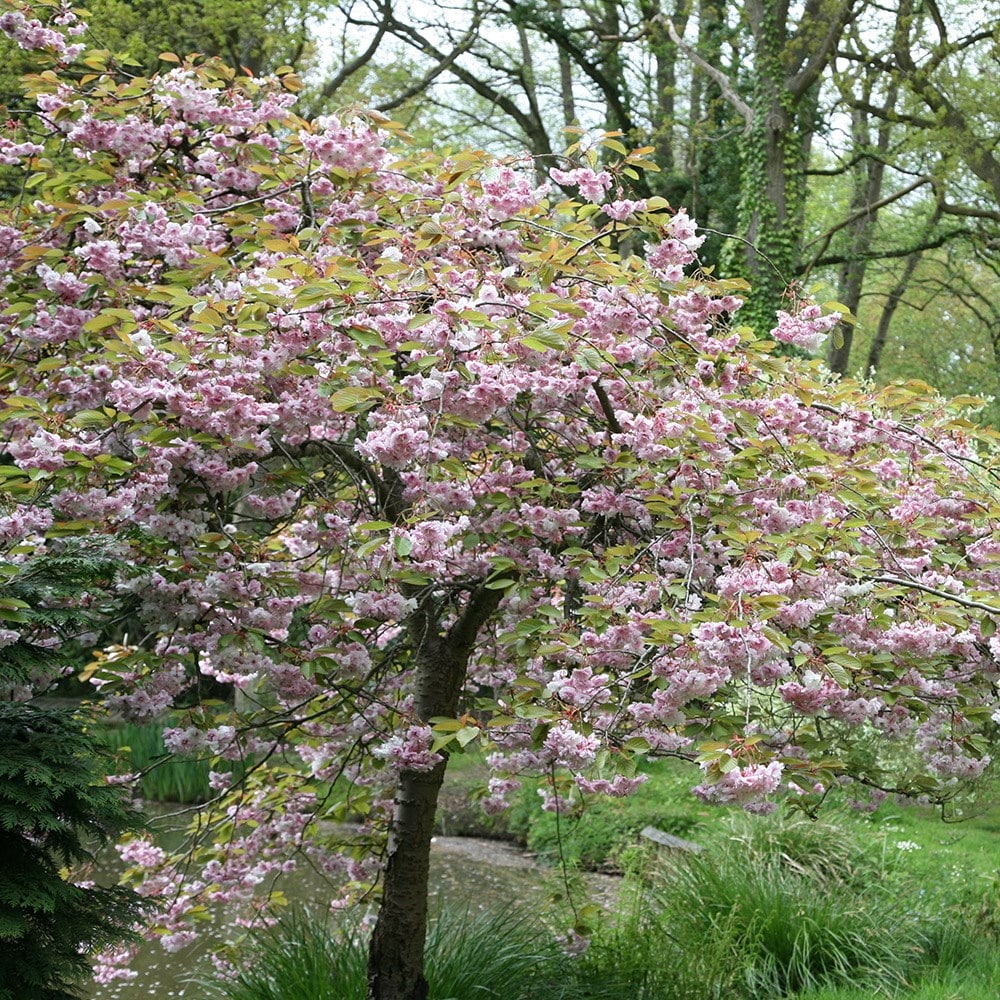
Buy flowering cherry blossom tree ( syn. Prunus 'Shidarezakura' ) Prunus 'Kikushidarezakura
'Kiku-shidare-zakura' is a small deciduous tree, the branches arching from the trunk. Leaves bronze when young, later glossy green. Flowers fully double, rich pink, to 3.5cm wide, in late spring Synonyms Prunus 'Shidare-zakura' Prunus serrulata 'Rosea' see more Prunus 'Kiku-Shidare' Join the RHS today and save 25% Join now < > © RHS 1999

Michael Peverett Prunus 'Kikushidarezakura'
The right time to plant Prunus 'Kiku-shidare-zakura' is during the dormancy period. In Western Europe, Prunus 'Kiku-shidare-zakura' with root balls can generally be planted from mid-November to late April, although this depends strongly on the climatic conditions and the species of tree.

Prunus serrulata 'Kikushidarezakura', Hängende Nelkenkirsche 'Kikushidarezakura'
Flowering Cherry Kiku Shidare Zakura will transform your garden for years to come with its incredibly beautiful year-round displays!. Also known as Cheal's Weeping, this deciduous beauty bursts into life in early spring with burnished-bronze leaves, quickly followed by clusters of pretty pink, double flowers that completely smother each elegant, arching branch.

Prunus serrulata 'Kikushidarezakura', Stamm, Hängende Nelkenkirsche 'Kikushidarezakura
One of the most popular weeping trees is the Prunus serrulata 'Kiku-Shidare-Zakura,' or Japanese Weeping Cherry. Many weeping cherry blossom tree cultivars have year-long interest. Some types of trees have glossy green lanceolate leaves on cascading branches that provide shade in the summer.

Prunus 'KikuShidareZakura' damheadnursery
Published: Monday, 30 October 2023 at 0:07 pm Advice on growing weeping cherry trees and varieties to try. Flowering cherry trees make a magnificent display of cherry blossom during spring when the branches are wreathed in pink or white flowers.

Višeň japonská KIKU SHIDARE ZAKURA 170 cm zahradní obchod Moravske Sady
DETAILS STYLE CARE Care Follow a regular watering schedule during the first growing season to establish a deep, extensive root system. Watering can be reduced after establishment. Prune for shape and structure after flowering. HISTORY Lore The name of this plant, 'kiku-shidare-zakura' translates from the Japanese as "weeping-chrysanthemum-cherry."
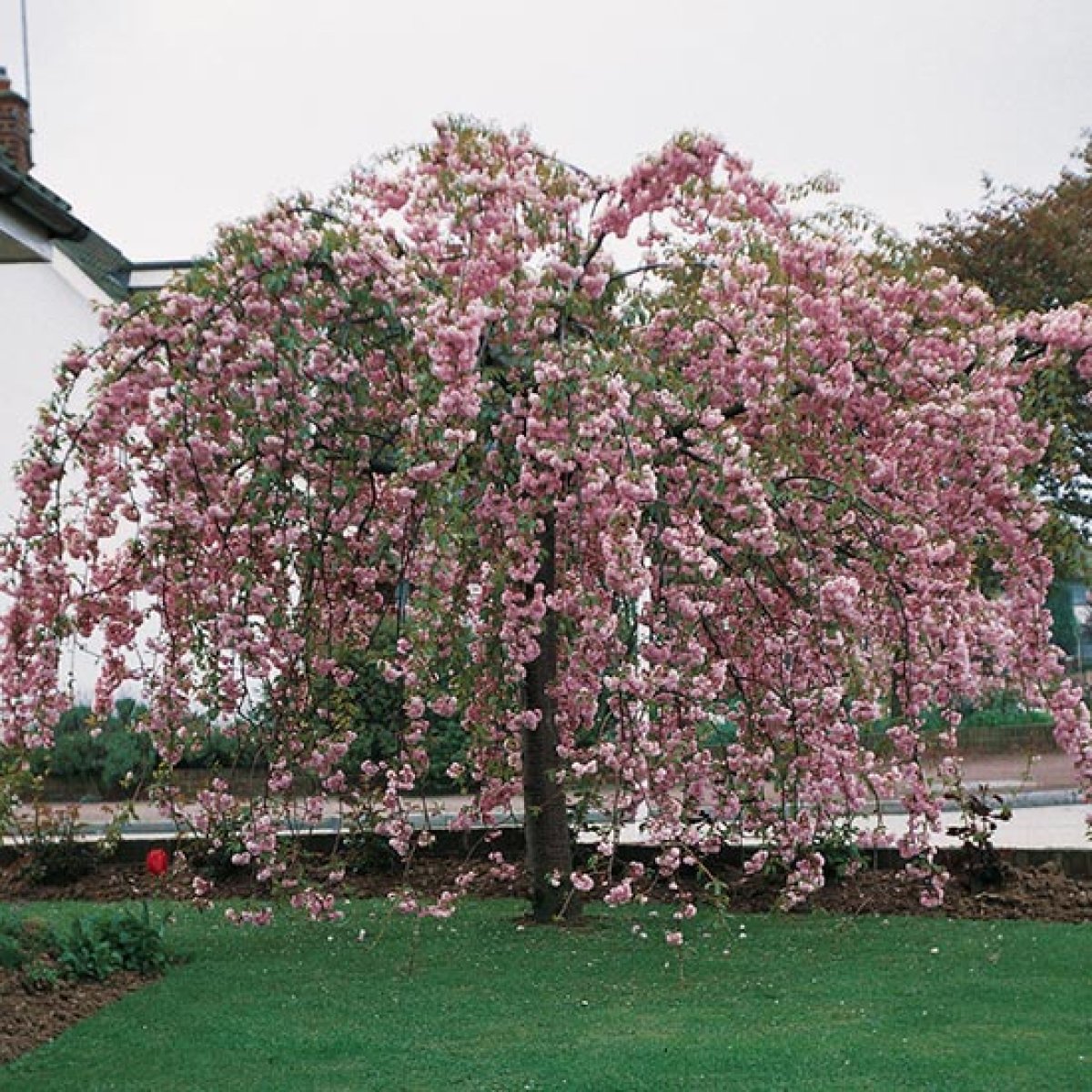
Prunus 'Kikushidarezakura' (Weeping Japanese Cherry)
A favorite of many gardens, Prunus 'Kiku-Shidare-Zakura' is a small deciduous tree with gracefully arching branches smothered with charming, fully double, rich pink flowers in mid to late spring. The abundant blossoms, 1.5 in. across (3.5 cm), are packed with up to 125 elliptic petals (!), giving them the look of a powder puff.
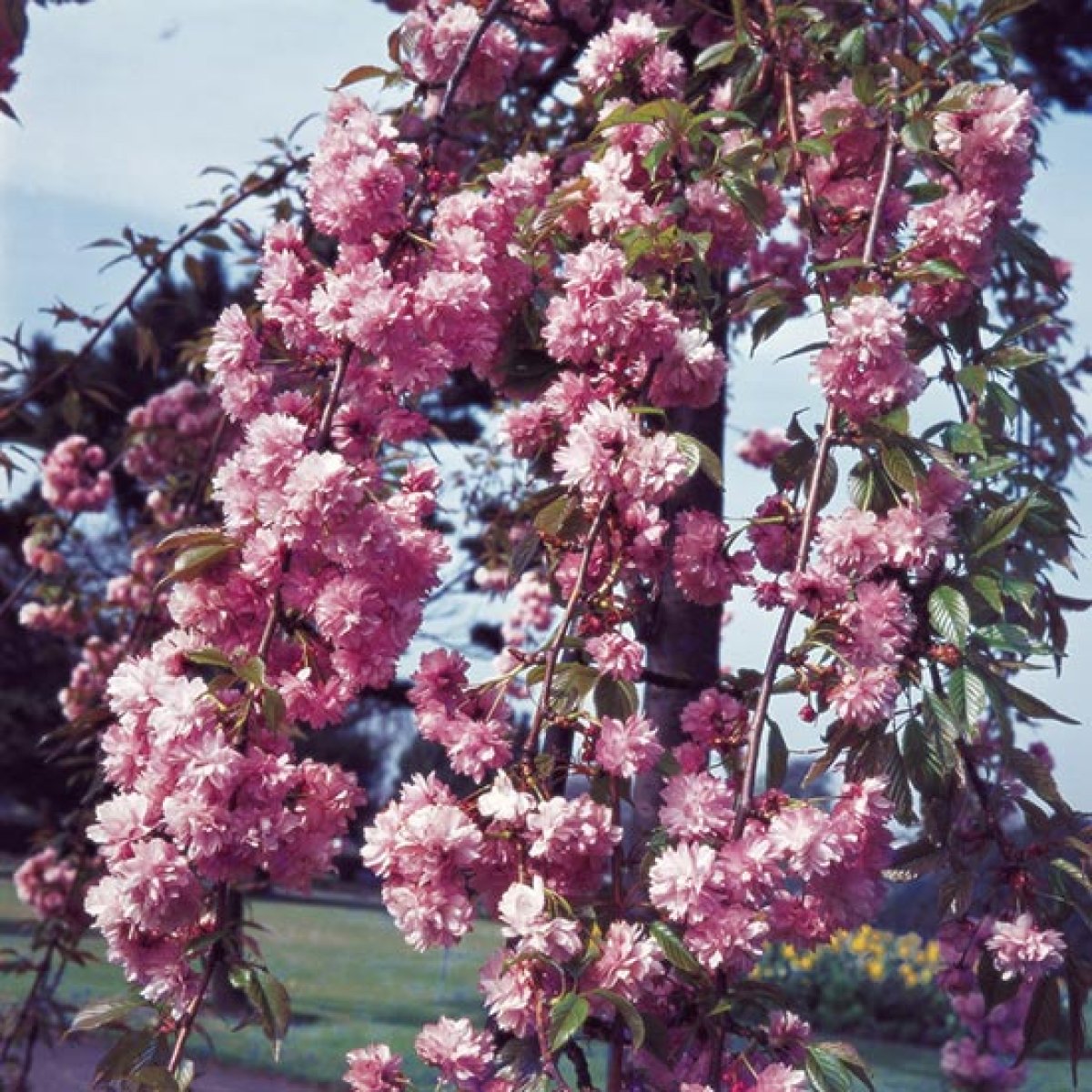
Prunus 'Kikushidarezakura' (Weeping Japanese Cherry)
Prunus serrulata or Japanese cherry is a species of cherry tree that grows naturally in Japan, China, and Korea, and it also refers to a cultivar produced from Prunus speciosa (Oshima cherry), a cherry tree endemic in Japan. Historically, the Japanese have developed many cultivars by selective breeding of cherry trees, which are produced by the complicated crossing of several wild species, and.

Michael Peverett Prunus 'Kikushidarezakura'
Prunus 'Kiku-shidare-zakura' is a popular and elegant, small weeping cherry tree with arching branches which are covered with bright pink, double flowers in spring. The leaves are bronze when they first emerge in spring, turning a dark green later in the year. A trained, mature plant can look a little like a fountain of trailing branches and bloom when in full flower.

Prunus Kikushidarezakura
The most noticeable features of the dwarf weeping cherry tree are its rounded and drooping (or weeping) branches and the bright pink or white blossoms it produces for a week or two each spring. Depending on the species, the color of the flower blossoms may be solid white, off-white, yellowish-green, light pink, or bright vivid pink.

Arriba 97+ Foto Prunus Serrulata Kikushidarezakura Mirada Tensa 09/2023
The new foliage of Prunus 'Kiku-shidare-zakura' emerges a pretty bronze colour, before maturing to green throughout the summer. As autumn approaches the foliage turns to orange-bronze, glowing like a beacon on bright autumn days. Height and spread: 4m (13').
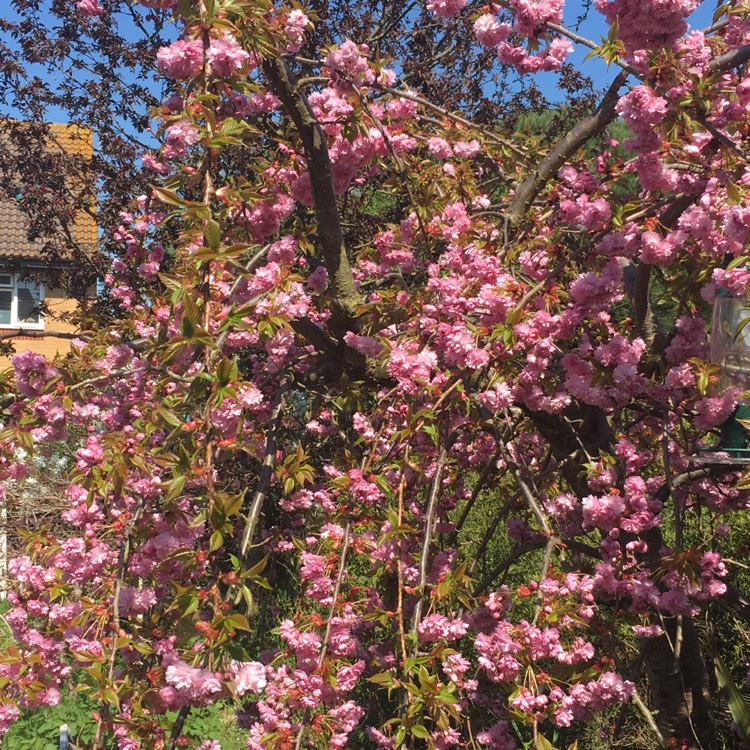
Prunus Serrulata 'KikuShidare Zakura', Weeping Flowering Cherry Tree uploaded by raregold71
This dwarf weeping cherry tree reaches a height and spread of 10-15 feet. It produces pink, double flowers. Kiku-Shidare-Zakura means "weeping chrysanthemum cherry" as the pink flowers have the appearance of a small chrysanthemum. Hiromi dwarf weeping cherry (Prunus jacquemontii) Prunus jacquemontii is a compact tree that produces pink flowers.
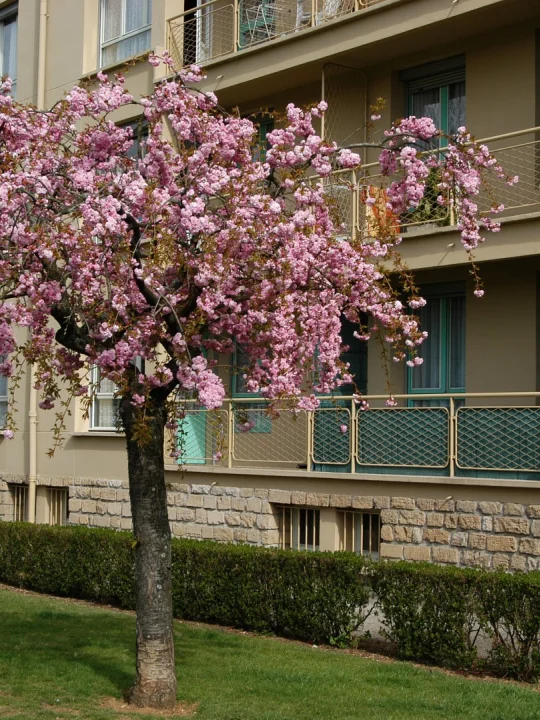
Prunus 'Kikushidarezakura' Prunus 'Kikushidarezakura' Van den Berk Nurseries
Prunus 'Kiku-Shidare-Zakura', more commonly known as Cheals Weeping Cherry, has bright pink double flowers in Spring, and has bronze-coloured emerging foliage that turns green, and then in Autumn gives a good display of bronze and orange. Contributed by @ErinMc plant Features Full sun Occasional watering Full Frost Hardy: 5F (-15°C)

Japanische HängeNelkenkirsche 'KikushidareZakura' Prunus serrulata 'KikushidareZakura
The most spectacular dwarf weeping cherry tree is the Japanese cherry tree 'Kiku-Shidare-Zakura'—or sakura for short. These small trees have large stunning pink blossoms with masses of ruffled petals, making the cherry flowers look like powder puffs. Weeping cherry blossom trees produce fruit, but it's small, sour, and inedible.
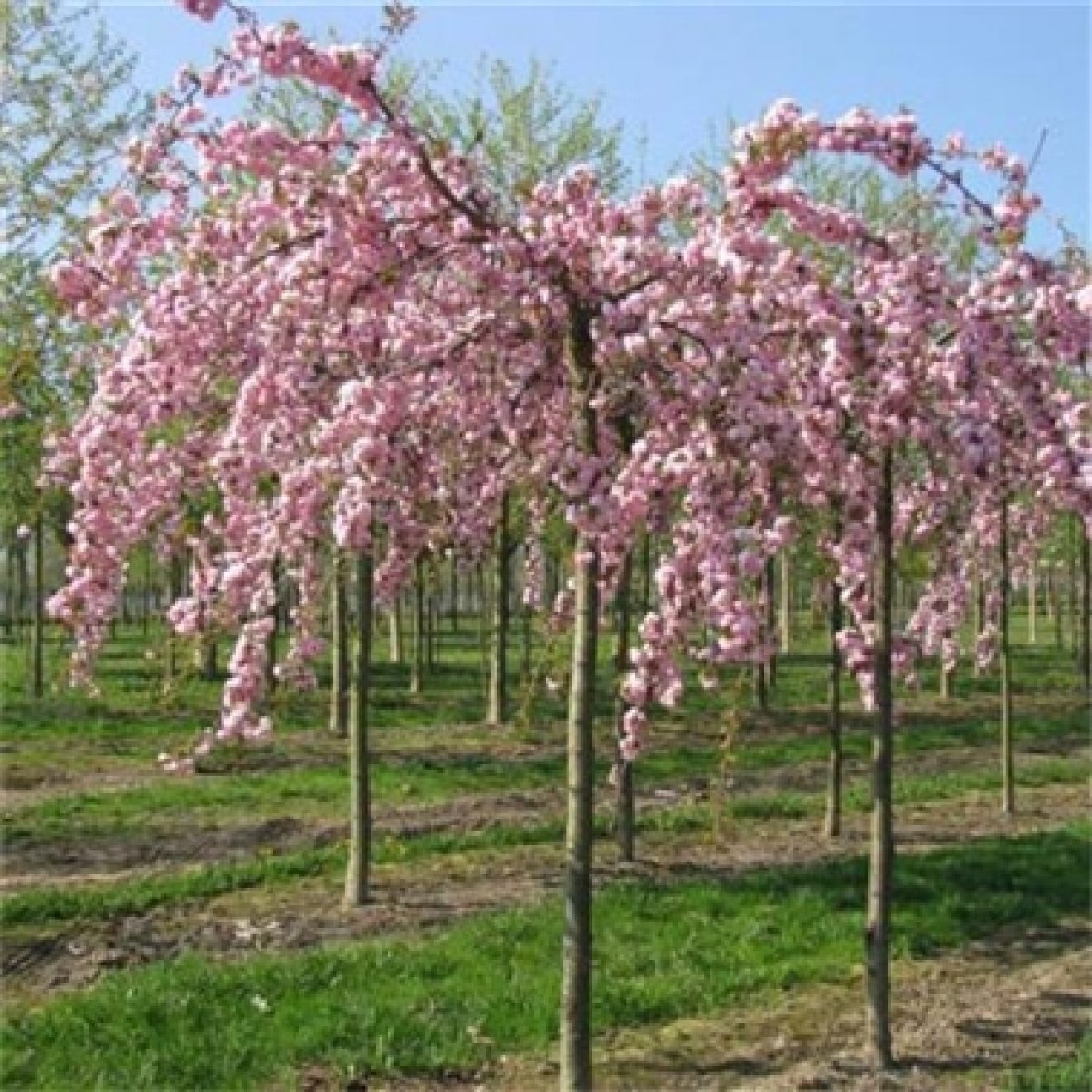
Prunus Serrulata Kiku Shidare Zakura Cerisier Japonais My XXX Hot Girl
'Kiku-shidare-zakura' means 'Weeping Chrysanthemum Cherry' in Japanese. Prunus Growing Tips: Best grown in well-drained soil, in full sun to achieve the best flower display and autumn colour. Will tolerate most soil types including chalk and clay. Height and Spread (after 10 years): 2.5m x 2.5m.